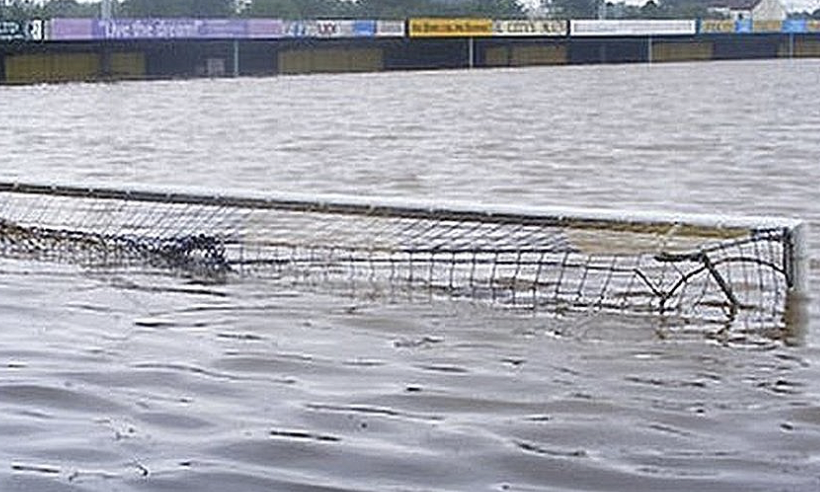September 22 – Almost half of all football stadiums in England are put at risk by climate change in the form of flooding, storms and heat waves, according to experts at insurer Zurich UK.
Of the 92 stadiums that span the top four leagues in English football, 39 will face a high risk from three or more climate hazards by 2050, Zurich UK’s research shows.
The study, carried out using advanced climate modelling, ranked all grounds based on their future threat from flooding, extreme rainfall, drought and windstorms. It suggests clubs could face a challenge from severe weather events unless they take action to prepare and adapt.
Kumu Kumar, Head of Zurich Resilience Solutions UK, said: “Football has always had to cope with unpredictable weather, but the game must now prepare for more extreme conditions. Floods, torrential rain, droughts and windstorms could damage stadiums and disrupt matches, impacting clubs, players and fans alike. Clubs at every tier of the game should take steps to identify and address their risks. The costs of inaction are far greater.”
EFL League two side Grimsby tops the list of clubs most at risk due to its location on the North-East coast making to more susceptible to flooding and heavy rainfall.
Of the top 20 stadiums most at risk, only two are from the Premier League in the form of Crystal Palace’s Selhurst Park and Brighton’s Amex Stadium; both of which are predicted to face severe windstorms in years to come.
Kumar added: “We’re already seeing more extreme weather events in the UK yet the country as a whole is inadequately prepared. Football clubs, like other businesses, need to close the resilience gap and ready themselves for more destructive weather. By understanding the climate hazards they face, clubs can better prepare and adapt.”
Zurich UK have released the following advice to football clubs in order to aid their upcoming battle with the elements:
- Replace concrete concourses with surfaces that can better absorb rain to help prevent flash flooding.
- Grounds at risk of flooding could install barriers to safeguard pitches, ensure drainage systems are well maintained and regularly aerate grass pitches to reduce water logging.
- During droughts, rainwater harvesting could be used to sustainably irrigate pitches.
- Clubs should establish a response plan to remove vulnerable items to a secure location before windstorms.
Contact the writer of this story, Harry Ewing, at moc.l1745005584labto1745005584ofdlr1745005584owedi1745005584sni@g1745005584niwe.1745005584yrrah1745005584

